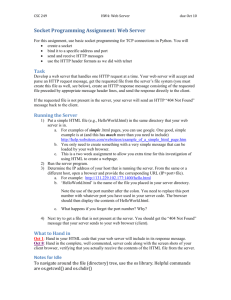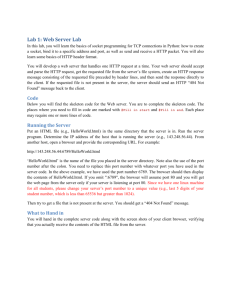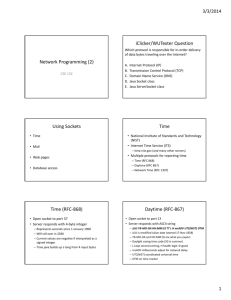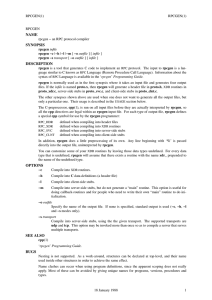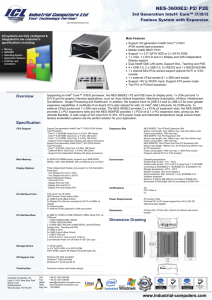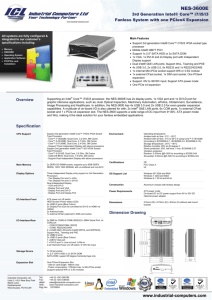CMPT-401 Assignment 1
advertisement
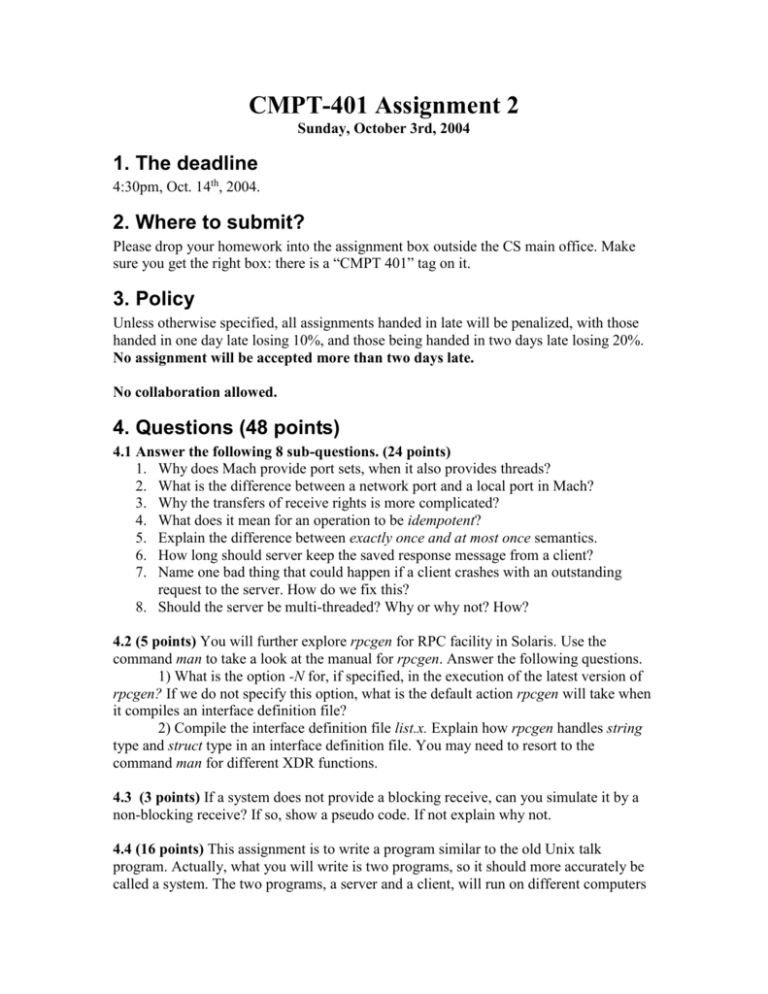
CMPT-401 Assignment 2 Sunday, October 3rd, 2004 1. The deadline 4:30pm, Oct. 14th, 2004. 2. Where to submit? Please drop your homework into the assignment box outside the CS main office. Make sure you get the right box: there is a “CMPT 401” tag on it. 3. Policy Unless otherwise specified, all assignments handed in late will be penalized, with those handed in one day late losing 10%, and those being handed in two days late losing 20%. No assignment will be accepted more than two days late. No collaboration allowed. 4. Questions (48 points) 4.1 Answer the following 8 sub-questions. (24 points) 1. Why does Mach provide port sets, when it also provides threads? 2. What is the difference between a network port and a local port in Mach? 3. Why the transfers of receive rights is more complicated? 4. What does it mean for an operation to be idempotent? 5. Explain the difference between exactly once and at most once semantics. 6. How long should server keep the saved response message from a client? 7. Name one bad thing that could happen if a client crashes with an outstanding request to the server. How do we fix this? 8. Should the server be multi-threaded? Why or why not? How? 4.2 (5 points) You will further explore rpcgen for RPC facility in Solaris. Use the command man to take a look at the manual for rpcgen. Answer the following questions. 1) What is the option -N for, if specified, in the execution of the latest version of rpcgen? If we do not specify this option, what is the default action rpcgen will take when it compiles an interface definition file? 2) Compile the interface definition file list.x. Explain how rpcgen handles string type and struct type in an interface definition file. You may need to resort to the command man for different XDR functions. 4.3 (3 points) If a system does not provide a blocking receive, can you simulate it by a non-blocking receive? If so, show a pseudo code. If not explain why not. 4.4 (16 points) This assignment is to write a program similar to the old Unix talk program. Actually, what you will write is two programs, so it should more accurately be called a system. The two programs, a server and a client, will run on different computers and communicate with each other over a TCP socket. Once the socket connection is established, the programs will repeat the following loop: client reads a line of input text from its user client sends that line to the server server displays that line to its user server reads a line of input text from its user server sends that line to the client client displays that line to its user The text lines should be sent across the network in ASCII format. The loop should repeat until the following exit protocol is executed: One user enters a line with just a dot, ".". That side sends the dot to the other side, and then closes the socket. The other side will know to end the conversation when it receives the dot (but it does not need to close the socket). You should allow for either side of the conversation to initiate the exit protocol. (If it is initiated on the server side, the last three steps of the loop would be skipped on that last iteration.) If everyone implements the same protocol, then each client should be able to connect with each server. The server must be started first, and it will listen for client connections on a given port (of your choosing). The client can then be started, and it must input the server host name (or IP address) and port number. The client can then connect to the server, and the conversation begins. After the connection is closed, the server should keep running and wait for another connection. You should use C or C++ language for this assignment and make sure your programs can run on CSIL Sun Solaris machines. Please submit your source code, make file and executable files through the online submission server. If necessary, please include a readme file.

